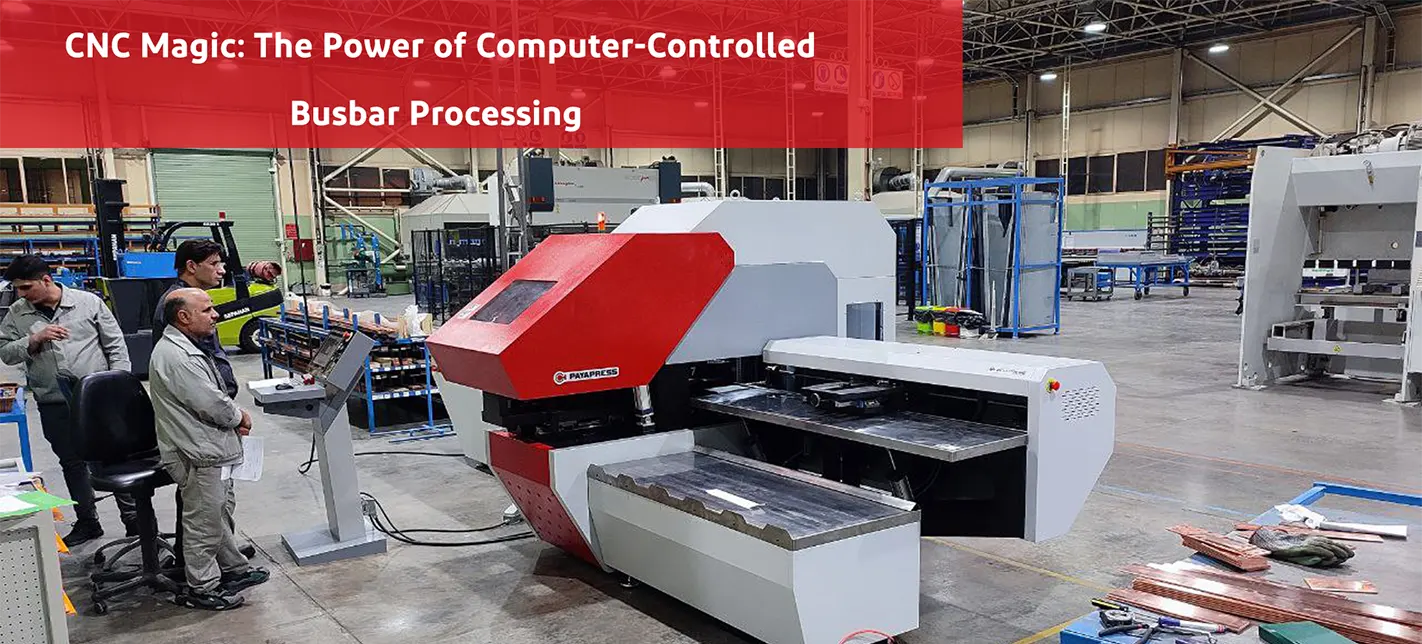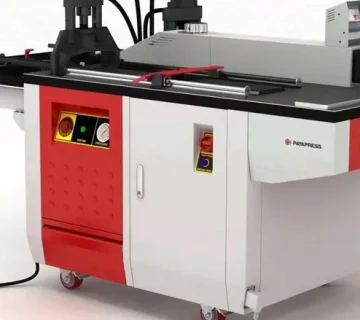In the ever-evolving world of electrical engineering, precision and efficiency are paramount. The fabrication of busbars, essential components for conducting electricity within electrical panels, requires meticulous attention to detail. This article explores the transformative power of CNC (Computer Numerical Control) busbar processing machines, focusing on the capabilities of the PAYAPRESS HBC-CP.CNC200 model. We will delve into the various types of CNC busbar machines, their applications, and the technological advancements that make them indispensable in the industry.
What is a CNC Busbar Machine?
A CNC busbar machine is a sophisticated device designed to automate the cutting, punching, and bending of busbars. These machines are equipped with computer-controlled systems that ensure high precision and repeatability, making them ideal for complex and high-volume production tasks. The PAYAPRESS HBC-CP.CNC200 is a prime example of such a machine, offering unparalleled accuracy and efficiency in busbar processing.
The PAYAPRESS HBC-CP.CNC200: A 2-in-1 CNC Machine
The PAYAPRESS HBC-CP.CNC200 is a versatile CNC machine designed for precision drilling and cutting of copper busbars. This 2-in-1 machine combines the functionalities of a CNC punching machine and a CNC cutting machine, streamlining the busbar fabrication process. The HBC-CP.CNC200 is user-friendly and fully automated, ensuring consistent and high-quality results.
Key Features of the HBC-CP.CNC200
- High Precision and Speed: The CNC controller provides a wide range of hole sizes and shapes, allowing for high-speed punching with exceptional accuracy.
- Durability and Efficiency: The machine is built for extreme durability and unrivaled speed, making it suitable for professional production lines.
- Automated Operation: Once the production process is launched, the machine operates fully automatically, reducing the need for manual intervention.
- Tool Stations: The linear tool carrier (y-axis) has seven stations that hold six punching tools and one cutting tool, allowing for rapid tool changes and efficient processing.
How to Operate the HBC-CP.CNC200
Operating the HBC-CP.CNC200 involves a straightforward process:
- 1. Cutting: The busbar is manually pushed into the machine towards the inlet and onto the rollers. The clamp takes the location of both sides of the busbar for proper positioning.
- Punching: After the cutting operation, the busbar is released and guided out automatically. The clamp then moves backward by the programmed instructions and performs the punching operation on the next busbar.
The operator needs to have CNC system programming skills to input the required program into the computer connected to the device. Scheduled items can be stored in memory as codes and numbers or alphabetically, making it easy to retrieve and use for future projects.
The Importance of CNC Busbar Machines
CNC busbar machines play a crucial role in the electrical industry for several reasons:
Precision and Accuracy
CNC machines ensure high precision and accuracy in busbar processing. This precision is essential for maintaining the electrical efficiency and safety of busbars, which are critical components in electrical panels and switchgear.
Efficiency and Productivity
The automation capabilities of CNC machines significantly enhance efficiency and productivity. These machines can handle high-volume production with consistent quality, reducing the time and labor required for manual processing.
Versatility
CNC busbar machines are versatile and can perform multiple operations, including cutting, punching, and bending. This versatility makes them suitable for a wide range of applications in the electrical industry.
Cost-Effectiveness
While CNC machines may have a higher initial cost, their efficiency and productivity lead to long-term cost savings. The reduction in manual labor and the ability to produce high-quality busbars consistently contribute to overall cost-effectiveness.

Applications of CNC Busbar Machines
CNC busbar machines are used in various applications within the electrical industry:
Switchgear and Distribution Systems
Switchgear and distribution systems rely on precisely processed busbars to ensure efficient and safe electricity distribution. CNC machines provide the accuracy needed for these critical components.
Electrical Panels
In electrical panels, busbars connect different components, and accurate processing is essential for optimal performance. CNC machines ensure that busbars are cut, and punched, to precise specifications.
Industrial Machinery
Busbars are used in industrial machinery to distribute power. CNC machines ensure that these busbars are processed accurately, maintaining the reliability and performance of the machinery.
Innovations in CNC Busbar Processing Technology
Recent advancements in CNC busbar processing technology have further enhanced precision and efficiency:
Programmable Controls
CNC machines equipped with programmable controls allow for precise and repeatable operations. Operators can input specific instructions into the machine, ensuring consistent results for each busbar processed.
Automation
Automation features in CNC machines streamline the busbar processing workflow. Once the production process is initiated, the machine operates automatically, reducing the need for manual intervention and increasing overall efficiency.
Tool Stations
The inclusion of multiple tool stations in CNC machines allows for rapid tool changes and efficient processing. This feature is particularly beneficial for high-volume production, where minimizing downtime is crucial.
Choosing the Right CNC Busbar Machine
Selecting the appropriate CNC busbar machine depends on several factors:
- Material Type
The type of metal used (copper or aluminum) affects the choice of machine. CNC machines like the HBC-CP.CNC200 are suitable for both materials due to their high precision and force capabilities.
- Production Volume
For high-volume production, CNC machines with automation features and multiple tool stations are preferred. These machines can handle large quantities of busbars with consistent quality, reducing the time and labor required for manual processing.
- Budget
The cost of the machine is a significant consideration. While CNC machines may have a higher initial cost, their efficiency and productivity lead to long-term cost savings. Businesses need to balance their budget with their production needs and the required level of precision.
Conclusion
In conclusion, CNC busbar machines like the PAYAPRESS HBC-CP.CNC200 play a vital role in the fabrication of electrical panels, ensuring precision, efficiency, and safety. These machines offer unique advantages tailored to specific processing requirements. As technology advances, innovations such as programmable controls, and automation continue to enhance the capabilities of CNC busbar machines, making them indispensable tools in the electrical industry.
By understanding the different types of CNC busbar machines and their applications, businesses can make informed decisions to optimize their busbar fabrication processes. This optimization ultimately contributes to the reliability and performance of electrical systems. Whether it’s a CNC busbar machine for industrial use or a portable CNC machine for on-site operations, the power of computer-controlled busbar processing ensures that precision and efficiency are maintained in every project. The continuous advancements in CNC technology promise even greater improvements in efficiency and accuracy, ensuring that electrical panels remain safe, reliable, and efficient for years to come.




No comment